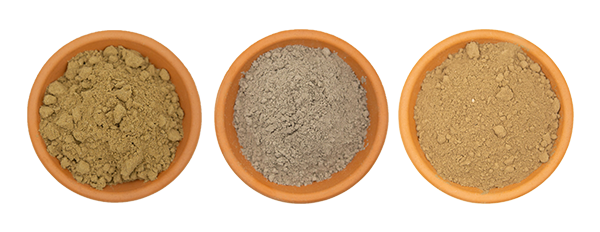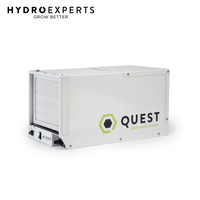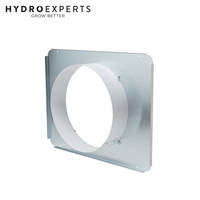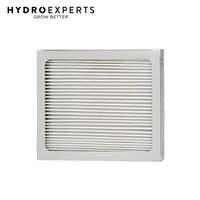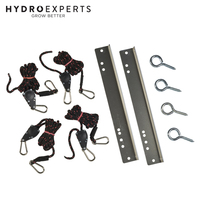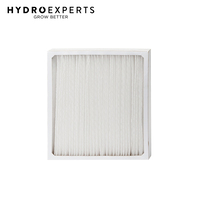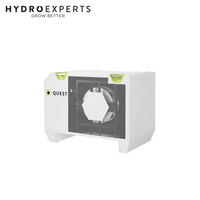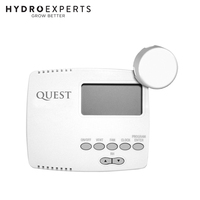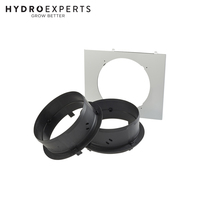Maintain optimal humidity levels for your hydroponics or mushroom grow operation with the industry-leading dehumidifiers from Hydro Experts. We carry an extensive selection of Quest, Dantherm and Ausclimate dehumidifiers to suit your needs, whether you need a portable, commercial or heavy-duty grow room dehumidifier.
Quest dehumidifiers are a top choice for both small and large-scale mushroom rooms and hydroponics grow facilities. Models like the Quest 70 and Quest 155 commercial dehumidifiers offer reliable performance, easy maintenance and adjustable humidity controls to keep your grow environment in the ideal range.
Dantherm dehumidifiers are designed specifically for commercial and industrial use, making them perfect for hydroponics grow operations. Their commercial dehumidifiers offer optimum performance even under extreme conditions, high humidity levels and fluctuating temperatures.
Ausclimate dehumidifiers provide excellent value for Australian growers. Their portable dehumidifiers are ideal for small grow spaces and classrooms, while their commercial dehumidifiers can handle the demands of mid-size to large grow rooms and mushroom cultivation facilities.
Whichever dehumidifier brand you choose from Hydro Experts, you'll get the industry-leading performance, durability and reliability you need to maintain the optimum humidity for your plants and crops. Contact us today to discuss your specific needs and find the perfect dehumidifier for your hydroponics grow operation or mushroom cultivation room.
Portable & Commercial Dehumidifiers by Category
1 Related Content Found

Quest Dehumidifers
How to Size Your Dehumidifier for Your Indoor Garden
If you're venturing into the world of indoor gardening, it's essential to consider every aspect, including humidity control. Neglecting this crucial factor can lead to issues like mold, pests, and powdery mildew, all of which can harm your plants. In this guide, we'll walk you through the process of sizing your dehumidifier for your grow room, ensuring a successful indoor gardening experience.
Understanding the Importance of Sizing
One of the most commonly overlooked aspects of setting up your indoor garden is accounting for the moisture generated by your plants through transpiration. Plants transpire approximately 97% of the water they receive, meaning the amount of moisture you remove with a dehumidifier should roughly match what your plants absorb.
Sizing your dehumidifier correctly from the start is crucial for several reasons. Choosing an undersized unit can result in mold, pest infestations, and other serious problems that can damage your plants and your indoor garden's success.
Factors to Consider When Sizing Your Grow Room Dehumidifier
When determining the appropriate size for your grow room dehumidifier, consider the following factors:
1. Pints Per Day Removed
The primary factor in choosing a grow room dehumidifier is its capacity to remove moisture, often measured in pints per day (PPD). This metric tells you how much water the dehumidifier can extract from your grow room within a 24-hour period.
2. BTUs Produced
BTU stands for British Thermal Units, which measure the heat energy generated by a piece of equipment, including a dehumidifier. It's essential to assess whether the BTUs produced by the unit are suitable for your grow room's size and environmental conditions.
Calculating the Size of the Dehumidifier You Need
To determine the size of the dehumidifier your grow room requires, follow these basic calculations:
-
Calculate Daily Water Usage: Start by assessing how much water you're providing to your plants daily. For instance, if you have 20 plants, each receiving 1 gallon of water per day, you'll be adding 20 gallons of moisture to your room.
-
Convert Gallons to Pints: Dehumidifiers are typically rated in pints, so you'll need to convert the gallons into pints. One gallon equals 8 pints. In this example, you'll need to remove 160 pints of moisture daily.
-
Adjust for Watering Frequency: If you water your plants every other day, you'll need to adjust the total pints accordingly. For instance, if you water every other day, you'll need to remove 80 pints of moisture each day.
Sizing Your Dehumidifier for Hydro Systems
If you're using a hydroponic system, you can use the same calculations but with one modification. Since plants in hydro systems don't consume all the water in the reservoir, you'll need to divide your daily moisture removal requirement by the number of days in a week (7) instead of every other day.
Also, remember to cover all reservoirs to prevent contamination and additional humidity from entering the grow room.
Additional Considerations
-
Air Conditioning: If you're running an air conditioner in your sealed grow room, it will remove some moisture. Check how many pints per day your air conditioner can remove and subtract that from your daily dehumidification needs.
-
CO2 Use: The use of CO2 in your grow room can increase humidity levels, so consider this when sizing your dehumidifier.
-
Exhaust Systems: If you're exhausting air from your room, the dehumidifier's effectiveness may decrease. In such cases, consider getting a dehumidifier with higher capacity.
Sizing for a Drying Room
When sizing a dehumidifier for a drying room, keep in mind that standard units may not be suitable. Desiccant units are better equipped to handle the extreme moisture content in the atmosphere during the drying process.
To calculate the size needed for a drying room, consider the wet weight of your flower. For example, if you bring in 100 pounds of wet flower, expect it to lose around 80 pounds of water weight during drying.
Assuming that 60-70% of this weight will be absorbed into the atmosphere in the first few days of drying, you'll need a dehumidifier capable of removing this moisture. This typically amounts to about 56 pints of moisture per day.
Final Thoughts on Sizing Your Dehumidifier
Remember that the key to sizing your dehumidifier is ensuring it can effectively remove the daily moisture your room receives. Water in, water out – this simple principle will help you determine the right dehumidifier size.
If you're uncertain about the size you need or have other questions related to indoor gardening, don't hesitate to seek advice from experts. Selecting the appropriate dehumidifier is crucial for the health and success of your indoor garden.
For recommendations on specific dehumidifier units based on your grow room's size and type, check out our list of the top grow room dehumidifiers of the year. This guide can help you narrow down your options and make an informed choice.
Remember, it's better to have a slightly larger dehumidifier than you think you need to avoid potential issues caused by undersizing.
And if you haven't already, explore our complete guide to grow room atmosphere and ventilation for a more comprehensive understanding of indoor gardening essentials.
Please note: All recommendations are based on ideal drying conditions of 60 degrees Fahrenheit and 60 percent humidity.
If you need further assistance or guidance on choosing the right dehumidifier, feel free to reach out to our experts. We're here to help you ensure a successful indoor gardening experience.
Q: What Is The Ideal Humidity Range?
A: In general, plants thrive in a slightly humid environment, but this ideal range can vary throughout a plant's life cycle. Here are the recommended humidity levels for a grow tent during various phases:
- Seedling/early veg: Aim for a humidity range of 70-75% during this initial growth stage. Young plants benefit from higher moisture levels.
- Veg: As your plants progress into the vegetative stage, maintain a humidity range of 50-70%. It can be slightly lower than during the seedling phase.
- Flower: During the flowering stage, adjust the humidity to 40-50%. Lower humidity helps prevent mould and mildew issues and promotes healthier flowering.
Q: How to determine if you need a dehumidifier?
To assess whether you require a dehumidifier in your grow room, you'll need a reliable humidity-measuring device like a hygrometer. Here's how to know if a dehumidifier is needed:
- Monitor Humidity Levels: Regularly check the humidity levels in your grow room using the hygrometer.
- Consistently Above 60%: If the humidity levels consistently read above 60%, it's a sign that your space is too humid for optimal plant growth.
- Consider a Dehumidifier: In such cases, consider using a dehumidifier to lower the humidity and create a more suitable environment for your plants.
Maintaining the right humidity levels is crucial for the health and growth of your plants, and a hygrometer is a valuable tool to help you make informed decisions about humidity control.

